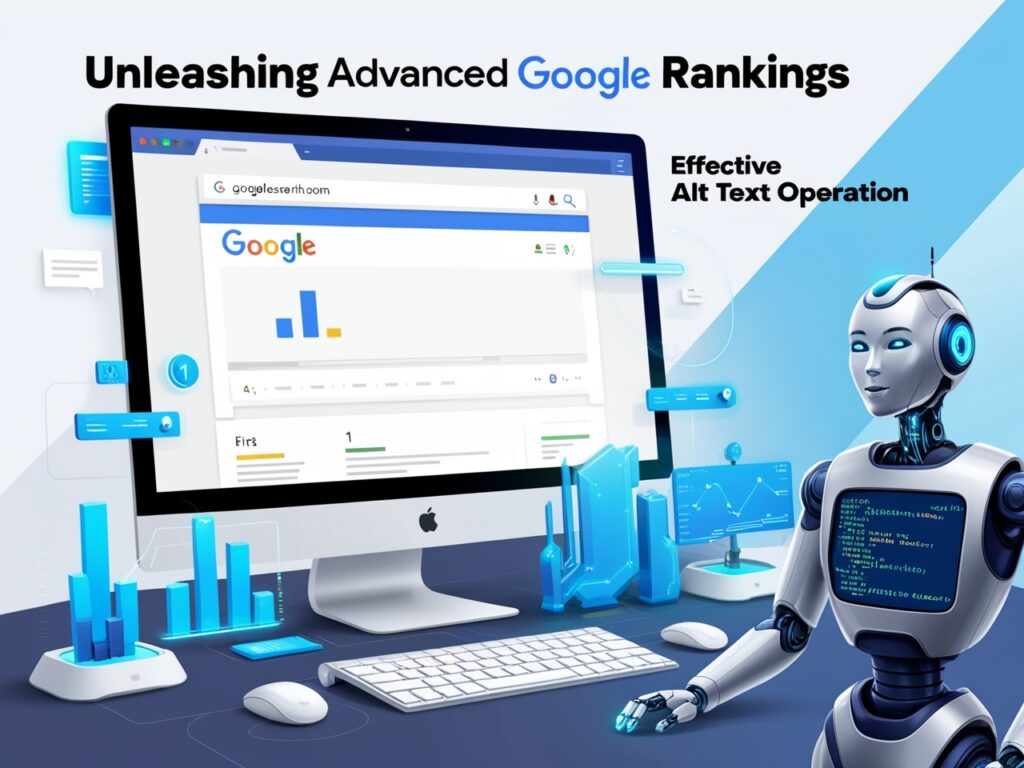Unleashing Advanced Google Rankings Through Effective Alt Text Operation What’s Alt Text, and Why Is It Important?
Alt text is a brief description of an image that appears in the HTML law of a webpage. It’s unnoticeable to regular observers but is read by screen compendiums for availability and used by hunt machines to understand image content. Google’s algorithms don’t “see” images like humans do; rather, they calculate on descriptive metadata. Alt textbook acts as a ground between your visual content and hunt machines, perfecting content discoverability and ranking eventuality.
Alt Text and Google’s Indexing Process
Google uses colourful rudiments to bottleneck and indicate websites, including title markers, headlines, URLs, and image metadata. When an alt textbook is present and optimised:
- It tells Google what the image is about.
- It helps match your runner with applicable user queries.
- It boosts your content’s applicability in image and web searches.
These small rudiments together make a stronger hunt machine presence.
Case Study 1: E-commerce Brand Boosts Business by 37% Using Optimised Alt Text
A small online fashion retailer noticed that their product images weren’t showing up in Google Image results. After conducting an SEO inspection, they streamlined their alt textbook descriptions to be specific and keyword-applicable (e.g., “blue denim slim-fit jeans for men” instead of “jeans”).
Within two months:
- Their point entered 37 further organic businesses from image hunts.
- • The brio rate dropped as users set up exactly what they were looking for.
- Deals increased, particularly from mobile users who landed directly on product runners via image hunt
The success stemmed from a simple but poignant change—making image descriptions more useful for both users and Google.
How Alt Text Helps Google Ranking: The Technical Breakdown
Alt textbook contributes to Google ranking in multiple ways:
- Enhanced Image SEO
Images frequently appear in top hunt results. Descriptive alt text allows your images to rank singly, which drives business to your website. - bettered on-runner SEO
Google considers the overall quality and applicability of content when ranking a runner. Adding an optimised alt textbook improves your content’s structure and keyword signals. - Advanced Availability Score
Google rewards websites that follow stylish practices in availability. The alt textbook improves your point’s usability for visually bloodied users, contributing to an advanced overall quality score. - Faster cargo times with smarter crawling
When images fail to load, the alt textbook gives the environment. While this doesn’t directly ameliorate speed, it helps maintain engagement and improves the crawlability of your content.
Stylish Practices for Writing Alt Text That Supports Google Rankings
- Be specific, not general.
Instead of writing “image of shirt,” use “men’s cotton polo shirt with short sleeves.” - Use Applicable Keywords Naturally
Don’t stuff keywords. Make sure your keyword fits the description naturally; similarly, “how alt textbook helps Google ranking” could be used in a composition point image alt textbook like “Screenshot showing HTML structure with alt textbook perfecting Google ranking visibility.” - Keep it terse and instructional.
Aim for around 8–15 words. Avoid keyword filling or overfilling descriptions. - Avoid ornamental descriptions.
Still, it’s better to leave the alt trait empty (alt = “”) so that screen compendiums skip it if an image is purely ornamental.
Case Study 2: Tech Blog Sees 50% Boost in Image Search Prints
A technology review blog concentrated on writing detailed product attendants and tutorials but had no way to optimize image descriptions. After learning how alt text helps Google ranking, they rewrote alt attributes for 500 images across their point.
Their way included:
- Writing accurate, keyword-aligned descriptions
- Adding structured captions
- icing: every tutorial screenshot had an alt trait
Over the coming 3 months, they reported:
- 50 further prints from Google Image Search
- 18% growth in backlinks from users participating in image-grounded hunt results
- A measurable increase in their sphere of authority
Tools to Help Write and Optimise Alt Text
Then there are many tools that simplify alt textbook creation and ensure you follow stylish SEO practices:
Tool Name: Screaming Frog SEO SpiderChecks missing or duplicate alt markers Ahrefs analyses keyword performance in image hunt. SEMrush provides perceptivity on image-grounded hunt businesses. Yoast SEO (WordPress plugin) Missing flags or weak image descriptions
These tools don’t write an alt textbook for you, but they ensure you’re covering all specialised gaps.
Aligning Alt Text with Google EEAT Principles

Google uses Experience, Moxie, Authoritativeness, and Responsibility (EEAT) to estimate content. Alt textbook supports EEAT in the following ways:
- Experience
Showing screenshots or plates with descriptive alt text demonstrates hands-on experience. - moxie
Using specific language in image descriptions reflects subject knowledge. - Authoritativeness
Well-labelled infographics can attract backlinks, perfecting authority. - responsibility
Proper image labelling adds to the absoluteness and trustability of a runner.
For illustration:
A healthcare point using an alt textbook, like “MRI checkup showing early signs of spinal slice herniation,” demonstrates medical knowledge and builds trust.
miscalculations to avoid in alt text writing
While learning how an alt textbook helps Google ranking, it’s important to avoid these common crimes:
- Keyword filling—Google penalises inordinate or unnatural keyword use
- Using train names as alt textbook—Avoid using train names like “IMG_3483.jpg”
- Leaving it blank for instructional images—only ornamental images should skip the alt textbook
- Using the same textbook for all images—Every image deserves a unique, applicable alt textbook
These miscalculations weaken your SEO signals and can reduce availability scores.
Case Study 3: Government Portal Enhances Availability and Search Visibility
A government point aiming to ameliorate public information availability checked their entire image library. After streamlining the alt textbook with precise descriptions, especially on charts, forms, and educational images, they saw:
- Advanced user experience for impaired users
- Advanced compliance with WCAG (Web Content Accessibility Guidelines)
- Increased discoverability on both Google Hunt and Google Image
The most surprising result was that some PDF downloads increased by 70%, simply because their exercise images were listed more effectively.
How to produce a workflow for alt text optimisation
Still, there’s a suggested workflow if you are managing a content-heavy website:
- Force Check
Use a straggler tool to find missing or weak alt textbooks. - Assign Responsibility
Designate a content writer or SEO specialist to craft alt text. - regularise format
produce internal guidelines (e.g., 10–15 words, natural keywords) - Track Results
Use Google Search Console to cover image performance. - Regular Updates
Refresh aged alt textbooks periodically based on keyword trends.
Final studies
Understanding how alt text helps Google ranking is essential for any serious website proprietor or content creator. It isn’t just about availability—it’s about strategy. When written duly, alt textbooks can increase visibility, ameliorate the student experience, and support long-term SEO pretensions.
Whether you are a blogger, e-commerce director, or digital marketer, optimising image descriptions with meaningful, keyword-applicable content is a small trouble with important results. Alt textbook is further than just a label—it’s your silent minister to Google.


